The My Home Park Garden Transformation

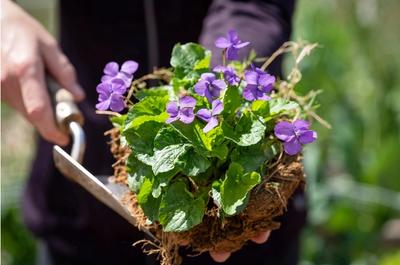
Read about David's mission to transform his traditional lawn by introducing native plants, enhancing its sustainability, beauty, and support for pollinators.
David Levine, co-founder and CEO of My Home Park began his initial landscaping project began with a classic approach: a neatly manicured lawn surrounded by a mix of ornamental shrubs, grasses, and non-native plants. As David became more aware of the environmental impact of traditional lawns, he was inspired to transform his yard by introducing native plants to improve its sustainability and better support the ecosystem. In just four years, this space underwent a transformation into a stunning native garden, now bursting with color and vitality, and providing a haven for thousands of pollinators and other beneficial wildlife.
Watch how David changed his traditional landscaping into a thriving native garden.
David’s goal was to design a beautiful, low-maintenance garden that would also benefit the bee population. This mission led him to meeting Wyatt Shell, the co-founder and Chief Science Officer of My Home Park, who has spent the better part of the past 20 years studying biology and wild bee ecology. With their aligned visions and David’s expertise in entrepreneurship and product innovation, they founded My Home Park to further their shared commitment to saving the pollinator population.
Like others before him, David discovered the most effective way to introduce native plants into his garden through trial and error. He started with native seeds, which grew into a diverse and lush landscape. However, there was little visual logic to where one species or another popped up - it was great for pollinators but a little messy for neighbors. In his further plantings, he applied a series of design rules to ensure a more polished and visually appealing garden that still provided ecological value. While doing so, David found that using plant plugs was the best method to create a well-structured, beautiful, and sustainable native garden.
Grass Lawns and the Environment
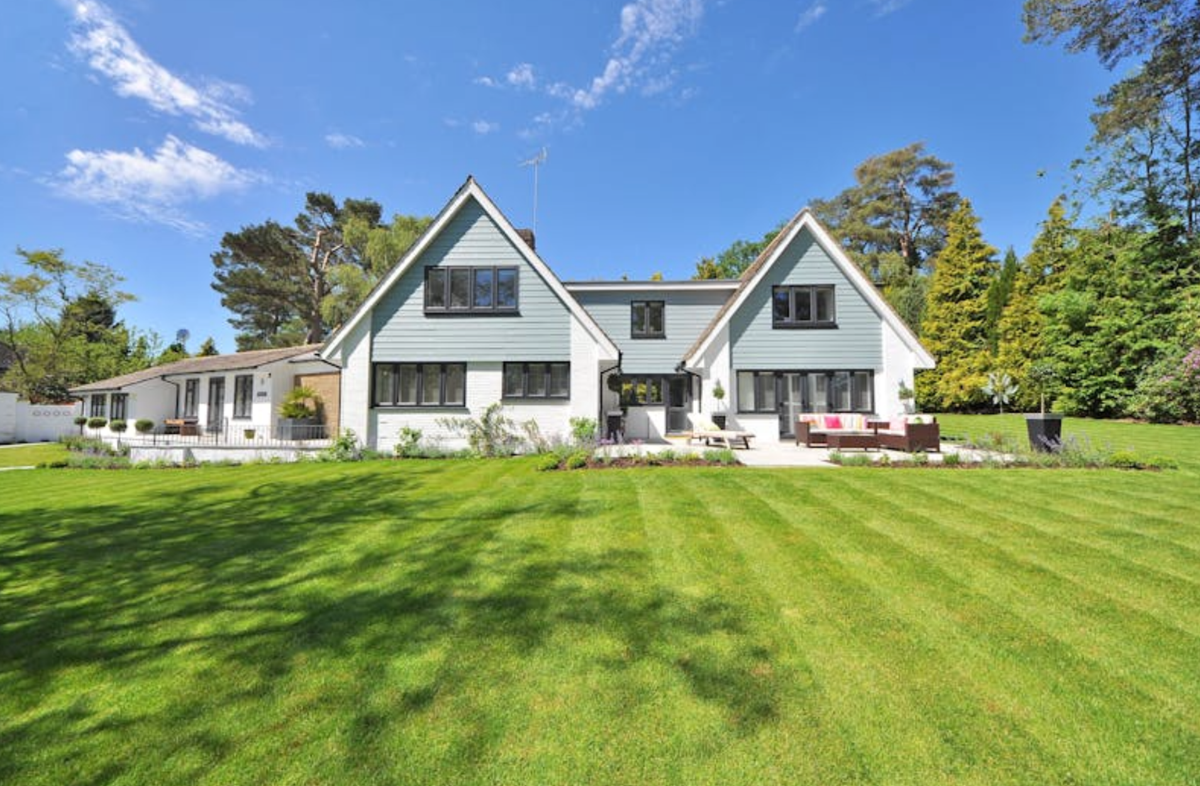
David’s property originally had expansive grass lawns in both the front and backyard. While visually appealing to some, lawns are not exactly the most environmentally friendly landscaping choice. Despite their traditional popularity in American yards, lawns can be costly and are generally detrimental to the environment. Here are a few reasons why:
1. Water Consumption and Chemical Use: Lawns in the U.S. consume around 9 billion gallons of water per day, averaging around 96 gallons per household. The fertilizers and pesticides used on lawns to maintain their pristine green appearance eventually washes off into storm drains, harming downstream ecosystems and wildlife.
2. Loss of Biodiversity: Lawns are effectively a bloomless “monoculture” only allowing for the growth of one species in a given area. Biodiverse ecosystems thrive in environments with multiple plant species, as each plant hosts and provides for different beneficial insects and other wildlife.
3. Carbon Emissions: Simply maintaining a lawn requires an enormous carbon footprint as the upkeep is typically done through mowers and blowers, exacerbating air pollution and greenhouse gasses.
Due to these reasons, many people are embracing the “no-mow movement” which encourages letting lawns grow out, and introducing some new plant species. Native plants are an excellent alternative to traditional lawnscapes reducing the usage of water and chemicals, reducing carbon emissions and enhancing biodiversity.

Seed Gardens
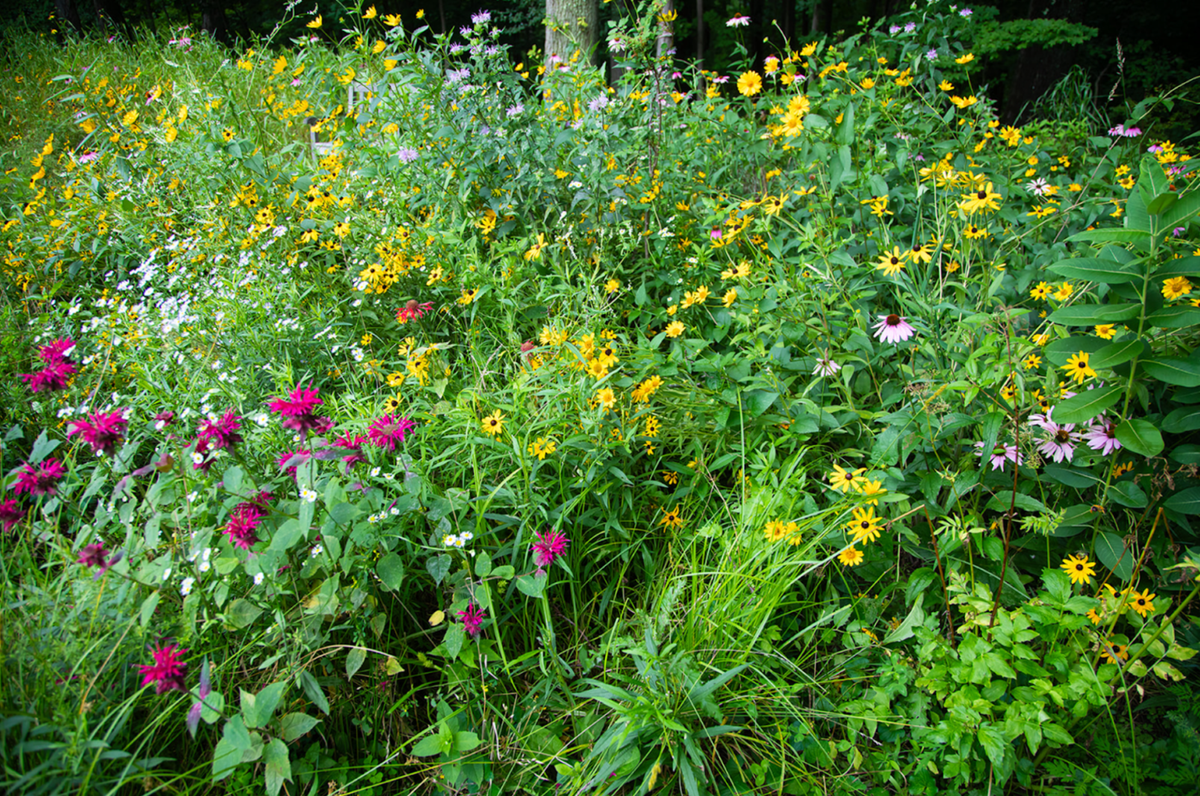
A popular option for growing native plants is using native seed mixes. Seed gardens come with a diverse array of species in each pack, which boosts the biodiversity of your garden and creates a vibrant mix of plants. When planting a seed garden, you let nature take its course, allowing plants to self-select based on their suitability to the environment. This approach not only results in a more organic and natural-looking design but also ensures that the most adaptable plants thrive while others naturally wane.
It’s important to note that where you source your seeds matters. Many commercially available wildflower mixes can contain some exotic or even noxious species. To avoid this, be sure to source your seeds from a grower you trust, who uses only native plants for your region.
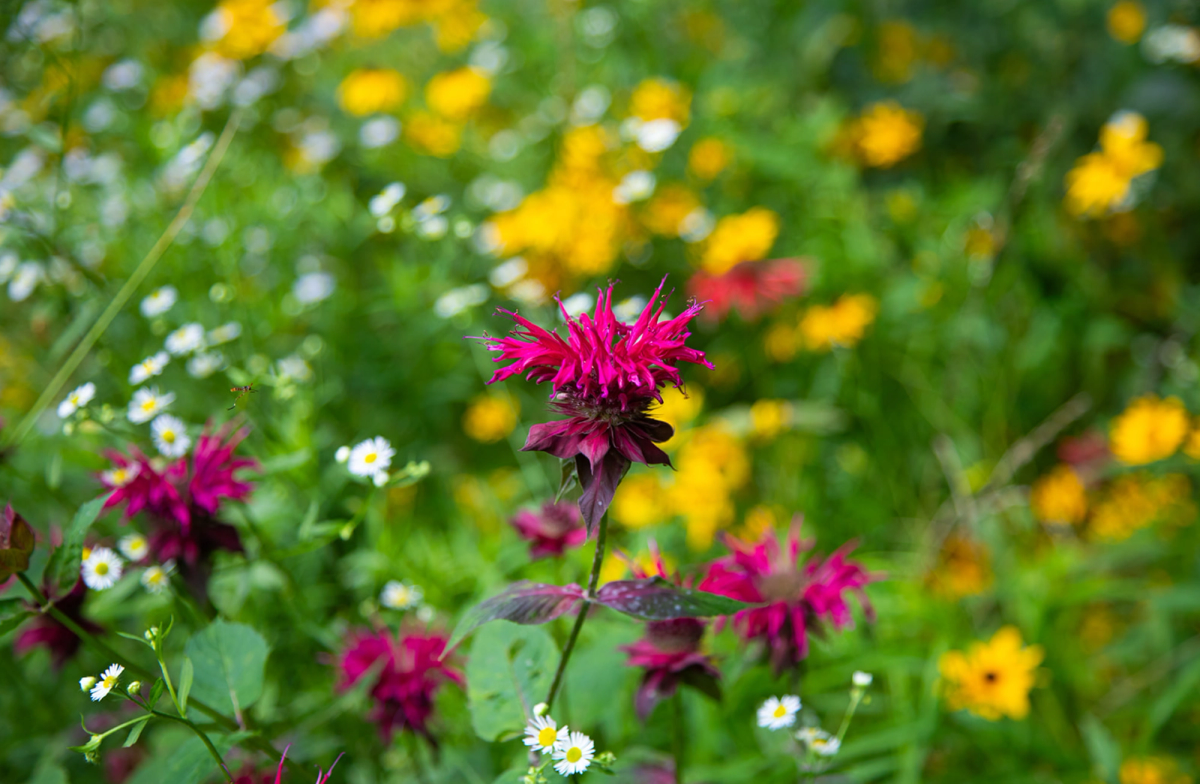
Benefits of Seed Gardens:
1. Biodiversity: These gardens promote biodiversity, as each packet generally contains more species than a pre-planned garden design. Each plant is specialized to support different species of beneficial insects and wildlife, increasing the positive environmental impact of your garden.
2. Budget-Friendly: If you’re comfortable with the somewhat random, natural look of seed gardens, they can be a cost-effective way to introduce a variety of native plant species into your landscape.
3. Prairie or Meadow-like appearance: By letting nature guide the design, seed gardens often mimic the look of natural prairies or meadows. This approach results in a dynamic landscape that closely resembles natural ecosystems.
Challenges of Seed Gardens:
1. Slow Establishment: Seed gardens typically take longer to become established compared to planting pre-germinated plugs. Patience is required as seeds germinate and grow into a mature, fully developed garden.
2. Weed Management: Managing a seed garden can involve more effort in controlling weeds. Young seedlings often struggle to outcompete weed species, necessitating regular attention and care to ensure the seeds have the best chance to thrive.
3. Responsible Sourcing: It is estimated that more than 50% of commercially available "wildflower" mixes contain at least a handful of exotic or even somewhat noxious (but pretty) species. Always be sure to check the species in your seed packs before buying! Some commercially available packs contain species that can ultimately cause more harm than good. Make sure your seed mix is sourced using only native plants for your region of the country.
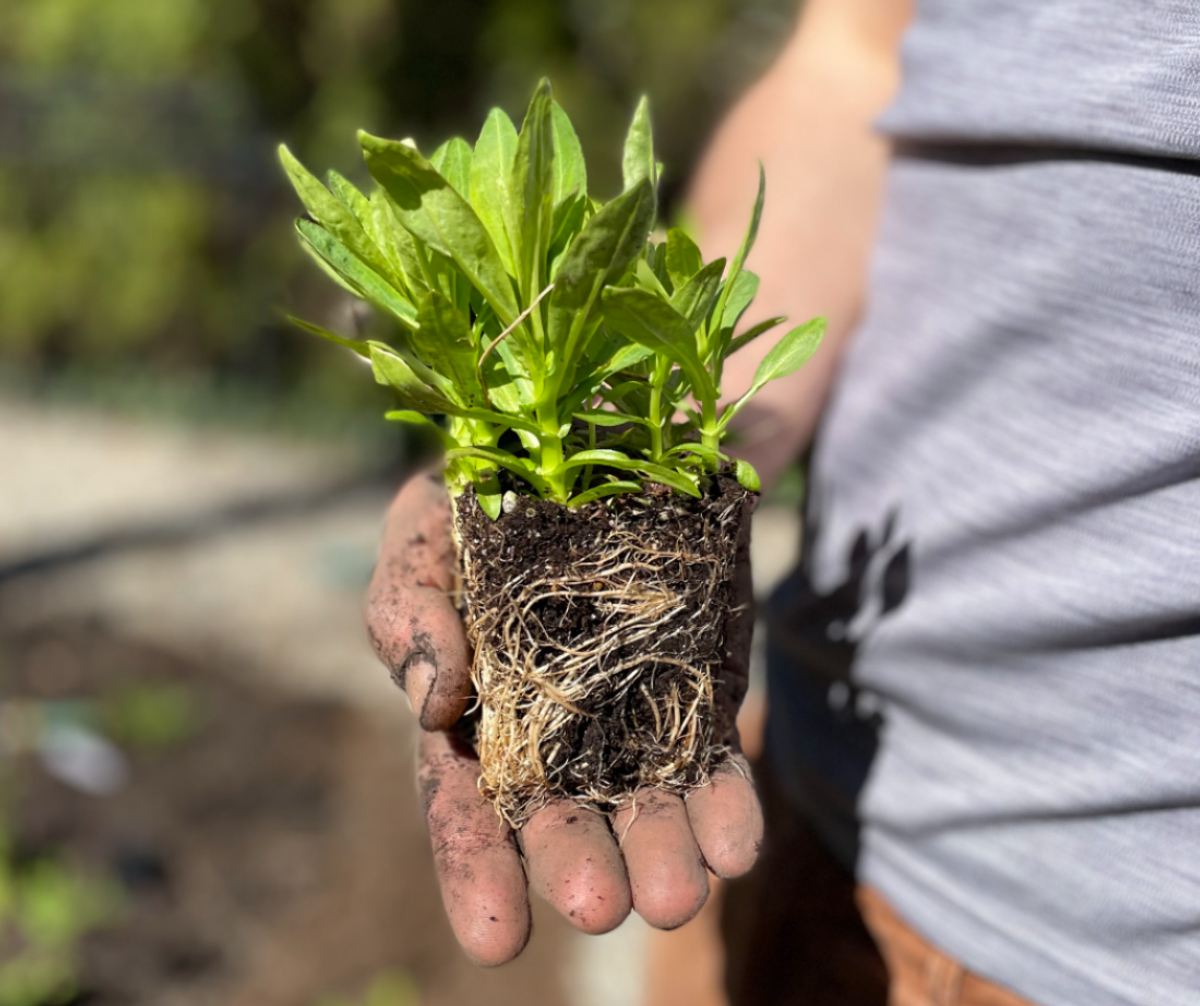
Garden Design- Planting with Plugs
An excellent alternative to seed gardens is planning and installing pre-germinated plant plugs. This approach provides the opportunity to explore native plant options while allowing for more intentional garden design. With pre-germinated plugs, gardeners can select specific plant species and have greater control over the garden's color scheme, height, shape, and blooming periods, leading to a more tailored and aesthetically pleasing landscape. At My Home Park, all of our garden collections are designed and shipped in the form of plant plugs. This allows each garden collection to be easy to install, grow and maintain. Here is an article detailing why we prefer shipping native plant plugs over seeds.
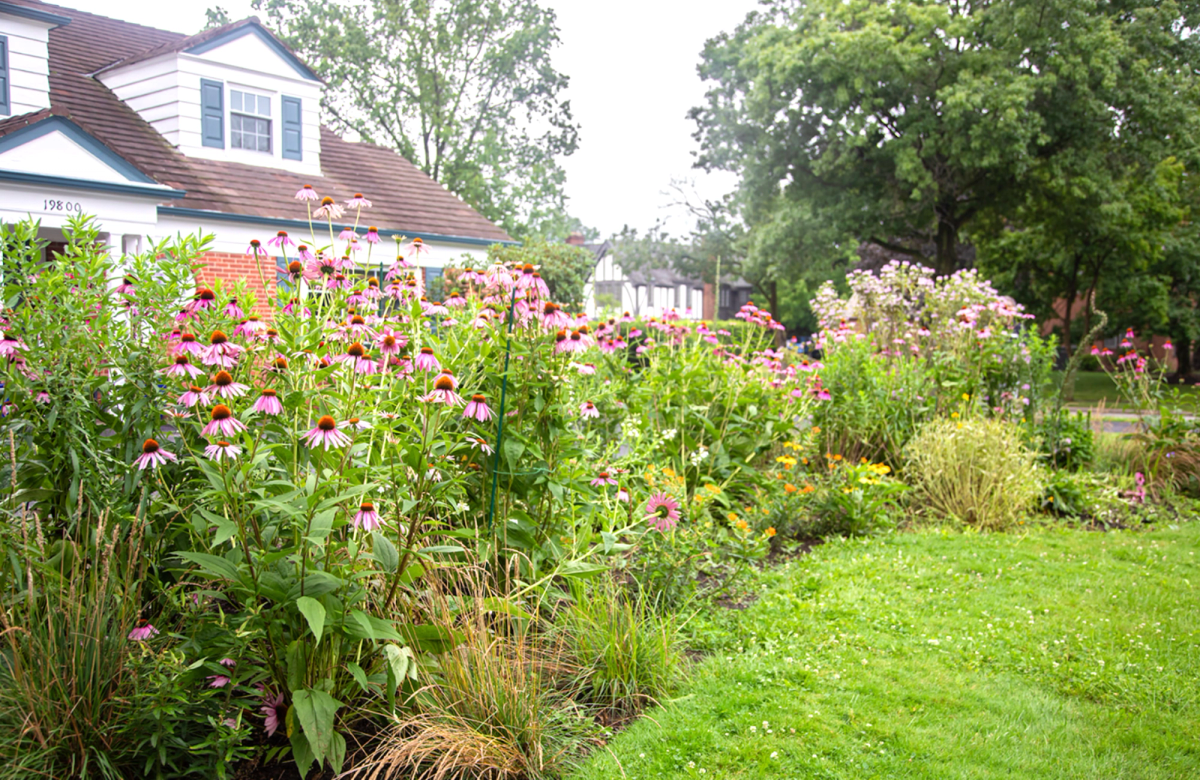
Benefits of Designed Gardens:
1. Reduced Time to Establishment: Introducing germinated plants in the form of plugs into a garden saves time by bypassing the trial and error phase and months of growth. These plants come with established root systems and have been nurtured in controlled conditions, giving them a strong start and accelerating their establishment in your garden.
2. Uniform Growth: Planting native plants from plugs ensures that all the plants are approximately the same age, leading to a consistent and uniform appearance as they mature. This method allows you to position the plants exactly where you want them in the garden, providing greater control over the layout and placement. This uniformity helps maintain a neat and structured look as the plants grow and fill in, something that would require considerable effort and time to achieve with seeds.

3. Better Success Rate: Using native plant plugs results in a much higher success rate than planting seeds. With well-developed roots and initial growth already in place, these plugs have a greater chance of thriving and spreading each year, leading to a more successful and enduring garden.
4. Improved Soil Health: Plant plugs with strong, established roots help to bring equilibrium to struggling soils. The root systems of native plants are able to prevent erosion in unstable sediment, and break up compacted earth. By aerating and enriching the soil, they enhance drainage and promote overall soil health.
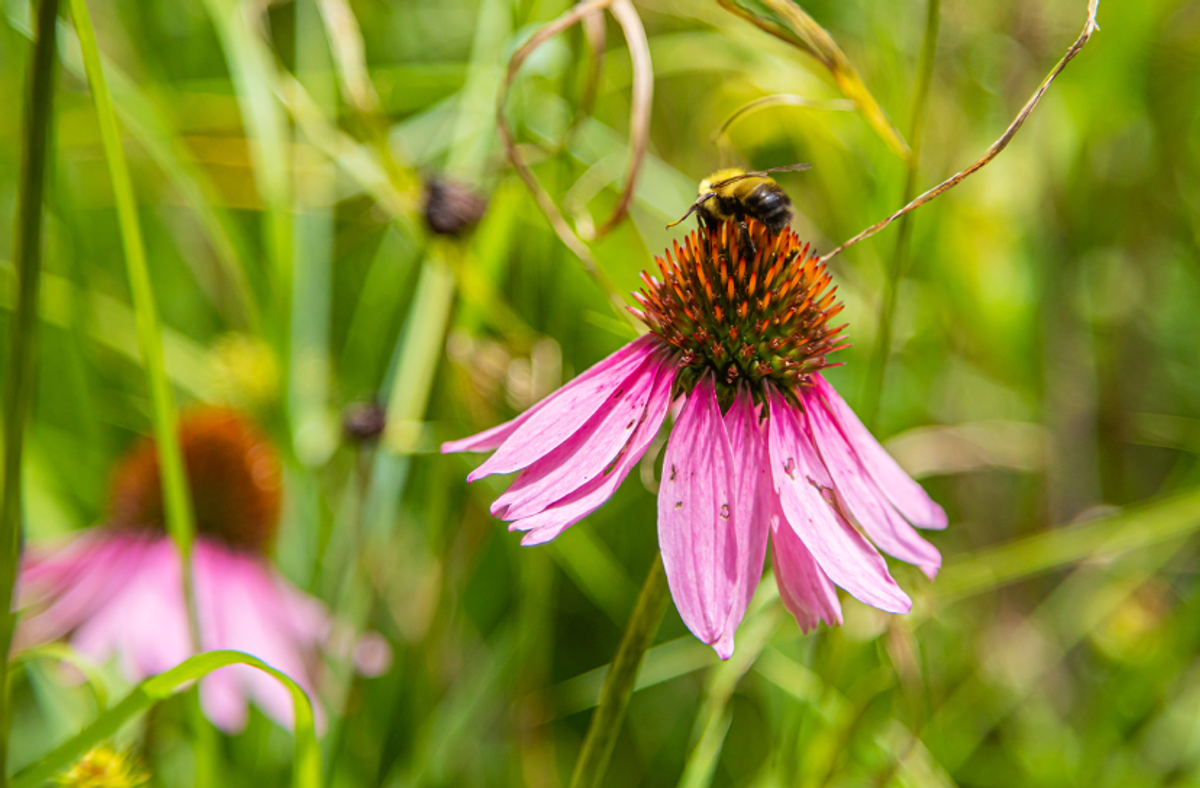
Native Plants are the Solution
David’s mission to cultivate a beautiful and sustainable yard led him to the world of native plants, resulting in a stunning and eco-friendly garden. David and Wyatt’s goal with My Home Park is to make native plants accessible, enjoyable, and easy for anyone. Regardless of your gardening skills or experience, you should be able to replace your lawn with native plants specifically adapted for your region’s growing conditions, and laid out to grow in a way that will appeal to pollinators and people alike.
At My Home Park, we make creating a native garden both simple and enjoyable. Our approach allows you to replace your lawn with a vibrant, thriving native garden that supports local ecosystems, and reduces maintenance costs. We’re committed to helping your garden, and local ecosystem, flourish.
To keep you informed and inspired, we invite you to subscribe to our newsletter where you can stay updated with our latest articles, how-to videos, and exclusive garden promotions.


Share this article


